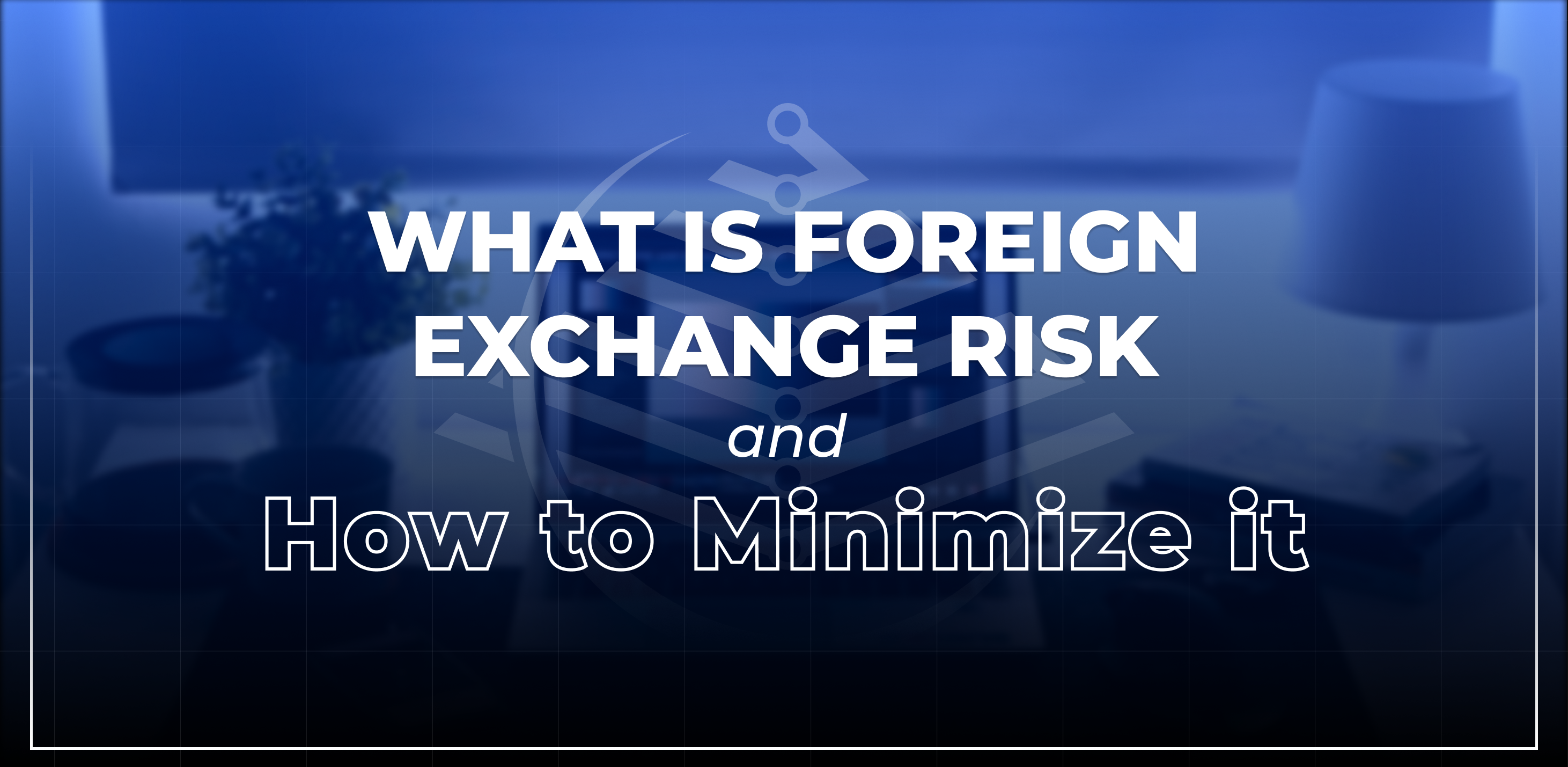Companies are increasingly conducting transactions in foreign currencies. However, unless exchange rates are fixed, this introduces risk. Let’s explore this topic together and clarify any concepts that might be unfamiliar to newcomers in the industry.
What is the definition of exchange rate risk? What is the essence of this concept? The PaySaxas team of experts is ready to provide a general overview and share their knowledge with you.
What is Foreign Exchange Risk?
So, what is exchange risk? It is also called currency risk and occurs when companies or individuals conduct transactions in multiple currencies. This danger makes them vulnerable to interchange rate fluctuations.
These shifts can impact the value of assets, liabilities, or cash flows, potentially resulting in financial losses. For instance, if a business agrees to pay a supplier in a foreign currency and that currency appreciates before the payment is made, the business will need to spend more in its own currency to complete the transaction.
It is particularly significant for companies involved in global trade, investments, or holding foreign currency assets. To manage exchange rate risks, businesses often employ hedging tools like forward contracts or options to secure interchange rates and reduce potential exposure.
Types of Foreign Exchange Risk
Foreign exchange risks affect businesses in different ways, depending on their exposure to currency fluctuations. Recognizing the various types of exchange danger is crucial for minimizing potential losses. Several types exist, each influencing companies uniquely based on their operational activities, financial reporting practices, and position in the market.
Transaction Risk
Transaction risk, also known as currency conversion risk, occurs when a company conducts cross-border transactions and faces currency fluctuations between the agreement and payment. These changes can alter the value of future cash flows in foreign currencies, leading to higher costs or lower revenue.
Companies involved in international trade or working with suppliers and clients are especially exposed to it. To manage it, businesses often adopt hedging techniques to safeguard against unpredictable shifts in exchange rates.
Translation Risk
Translation risk, often referred to as accounting foreign exchange risk, occurs when a company holds assets or liabilities in foreign currencies that need to be converted into its reporting currency for financial reporting. Changes in interchange rates can alter the values of these assets and liabilities, affecting the company’s financial standing and performance indicators.
It is especially significant for multinational companies with operations in various countries. It can impact their reported earnings and balance sheets, even in the absence of actual cash transactions.
Economic Risk
Economic risk, often referred to as strategic danger, pertains to the possibility that a company’s long-term financial success may be influenced by changes in exchange rates. In contrast to transaction and translation risks, which have more immediate effects, economic risk takes into account how currency fluctuations can impact a company’s competitive edge and market valuation over time.
It is especially significant for firms heavily reliant on imports or exports, as shifts in currency values can influence pricing, demand, and overall profitability. Companies frequently implement strategies like market diversification and pricing adjustments as part of their risk management in foreign exchange to stay competitive.
Credit Risk
Credit risk related to foreign interchange involves the risk of incurring losses due to a counterparty’s inability to meet their financial commitments in a currency transaction. It typically emerges when companies conduct transactions with clients or entities that might default on their payments.
Elements such as political unrest, economic fluctuations, or varying currency values can intensify credit risk. To address this issue, businesses frequently evaluate the creditworthiness of their counterparts. It may utilize strategies such as requiring collateral or obtaining credit insurance to safeguard against potential losses.
Liquidity Risk
Liquidity risk in the context of foreign exchange involves the challenges a company may encounter when trying to convert its foreign currency assets into cash without facing considerable losses. This danger often emerges when there is a lack of buyers or sellers in the market, resulting in delays or poor interchange rates.
Firms dealing with less liquid currencies or operating in unstable market environments are especially at risk. Companies typically hold a diversified currency portfolio and employ liquidity management techniques to effectively address their cash flow requirements.
Sovereign Risk
Sovereign risk pertains to the possibility of incurring losses due to a government’s failure or reluctance to fulfill its debt responsibilities or sustain stable currency conditions. This risk is especially significant for companies working in nations with volatile political climates, economic turmoil, or fluctuating regulations that may influence currency values.
Situations like loan defaults or the introduction of restrictive capital controls can greatly affect investments. Businesses typically perform comprehensive evaluations of a country’s political and economic landscape before entering into transactions.
Interest Rate Risk
Interest rate risk stems from the influence of changing interest rates on currency values and exchange rates. Shifts in interest rates can alter borrowing costs and investment returns. It drives currency fluctuations.
For businesses engaged in international trade or holding currency-denominated debt, these rate changes can result in higher expenses or diminished profits. Companies often employ hedging tools like interest rate swaps. It helps to shield against potential financial losses caused by fluctuating rates.
Examples of Foreign Exchange Risk
Foreign exchange risk can affect businesses in various ways. For instance, a U.S. company selling goods to Europe might experience transaction risk if the euro weakens against the dollar before payment, lowering the revenue in U.S. dollars.
Likewise, multinational companies with subsidiaries could face translation risk when converting foreign assets or liabilities into their reporting currency. It may impact financial statements.
Economic risk is also a concern for companies dependent on imports, as prolonged currency depreciation can increase costs and hurt profitability. These examples underscore the importance of managing foreign interchange risks through hedging and diversification strategies.
Ways to Manage Foreign Exchange Risk
Effectively managing foreign exchange risk is essential for companies engaging in global transactions, as currency fluctuations can greatly affect profitability and financial health. To minimize these possibilities, businesses can implement a range of strategies that help ensure steady cash flows and reduce potential losses.
From hedging tools like forward contracts and options to spreading currency exposure across various markets, companies have numerous ways to manage interchange rate volatility. The next sections will dive into the key techniques businesses employ to protect their financial well-being against the unpredictable nature of currency movements.
Hedging with Forward Contracts
Using forward contracts is a widely adopted approach for managing foreign exchange risk. These contracts enable companies to secure an exchange rate for a future transaction, offering protection against currency fluctuations.
This strategy is particularly valuable for businesses handling cross-border payments or income, as it ensures price stability and safeguards against adverse changes in exchange rates. By locking in a specific rate for a future transaction, companies can enhance their cash flow predictability. It reduces the danger of financial losses caused by volatile currency movements.
Using Options Contracts
Options contracts provide a flexible approach to managing foreign exchange risk. With an options contract, a business gains the right, but not the obligation, to buy or sell a currency at a set rate by a specific date.
This gives companies the advantage of benefiting from favorable currency movements while remaining shielded from negative changes. Options are particularly beneficial for firms looking to hedge against exchange rate volatility without being locked into a fixed rate. It offers both protection and the potential for profit in unpredictable markets.
Natural Hedging
Natural hedging is a technique employed by companies to mitigate foreign exchange risk by ensuring their revenues and expenses are in the same currency. This method entails matching currency inflows with outflows, thereby reducing vulnerability to exchange rate variations.
For example, a company that exports products might also procure supplies from the same foreign market, helping to offset its currency exposure. By implementing natural hedging, businesses can lessen their reliance on financial instruments, resulting in decreased transaction costs and streamlined risk management while preserving financial stability.
Currency Swaps
Currency swaps are a financial tool utilized to mitigate foreign currency exchange risk by facilitating the exchange of principal and interest payments between two parties in different currencies. This mechanism allows companies to obtain more favorable interest rates and access foreign currencies without directly converting their funds.
It reduces exposure to currency fluctuations. For example, a business might exchange its domestic currency for a foreign currency to finance its international operations while concurrently managing its debt. By leveraging currency swaps, companies can effectively protect themselves against exchange rate risks while enhancing their capital structure and reducing financing expenses.
Diversification
Diversification serves as an essential approach for addressing foreign exchange risk by distributing exposure across a variety of currencies and markets. By conducting transactions in multiple currencies, businesses can lessen the effects of unfavorable fluctuations in any one currency. This tactic aids in alleviating danger tied to particular economic or political events in specific areas.
Furthermore, companies can broaden their supplier and customer networks, boosting their ability to cope with currency volatility. Through strategic diversification, businesses can establish a more stable financial footing and more effectively manage potential losses stemming from exchange variations.
Leading and Lagging Strategies
Leading and lagging strategies are methods employed to handle foreign exchange risk by adjusting the timing of foreign currency transactions for payments and collections. Leading entails speeding up payments to international suppliers or customers when a favorable interchange rate is predicted. It effectively secures better management rates.
In contrast, lagging involves postponing payments or collections when a company anticipates a currency appreciation, enabling it to take advantage of more favorable rates in the future. By carefully managing the timing of these transactions, businesses can enhance their cash flow. They reduce the effects of currency volatility on their financial outcomes.
Regular Currency Monitoring and Forecasting
Consistent monitoring of currency values and forecasting are vital strategies for mitigating foreign exchange risk. By regularly observing exchange rate changes and evaluating economic indicators, businesses can make strategic decisions about their currency exposure. This forward-thinking approach enables companies to foresee potential fluctuations and modify their tactics, whether that involves timing transactions or employing hedging techniques.
Utilizing forecasting tools and conducting market analyses can yield valuable insights into upcoming currency trends. It helps organizations safeguard their financial assets and reduce a danger tied to currency instability. In essence, diligent monitoring and forecasting enhance financial planning and resilience in a constantly evolving global landscape.
Foreign Currency Accounts
Foreign currency accounts serve as an effective solution for foreign exchange risk management, enabling businesses to maintain and conduct transactions in various currencies. By operating accounts in the currencies they commonly use, companies can limit the necessity for immediate currency conversion, thus reducing their exposure to volatile interchange rates.
This approach is especially advantageous for firms involved in global trade, facilitating easier payments to foreign suppliers and receipts from international clients without incurring extra conversion fees. Utilizing foreign currency accounts allows businesses to improve cash flow management while lessening the impact of currency fluctuations on their financial health.
Conclusion
In conclusion, foreign exchange risk presents a significant challenge for businesses operating in the global marketplace, influencing both financial stability and overall profitability. By recognizing the different types, such as transaction, translation, and economic, companies can adopt targeted strategies to minimize their exposure.
Approaches like hedging, diversifying currency holdings, and continuous monitoring enable organizations to adeptly manage currency fluctuations. Ultimately, taking a proactive stance on foreign interchange risk not only safeguards financial assets. It also enhances resilience and promotes sustainable development in an ever-evolving international environment.








